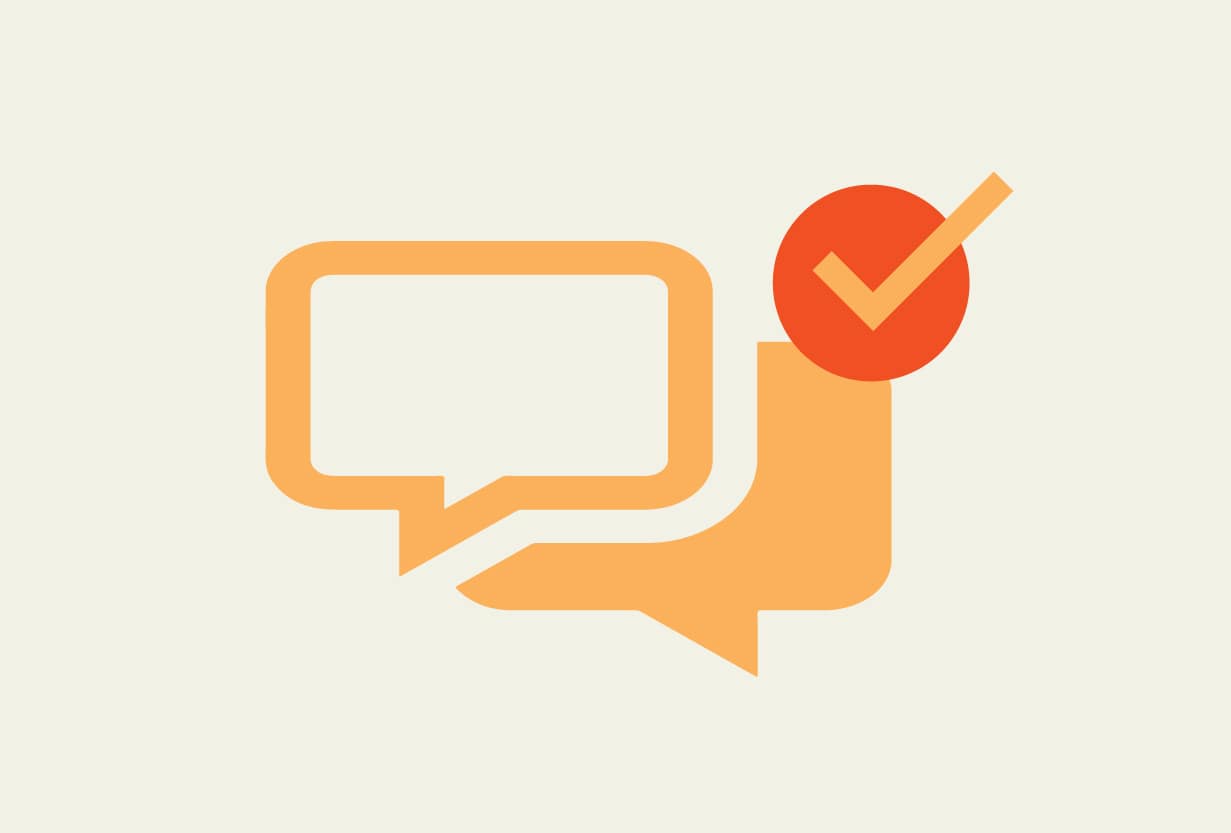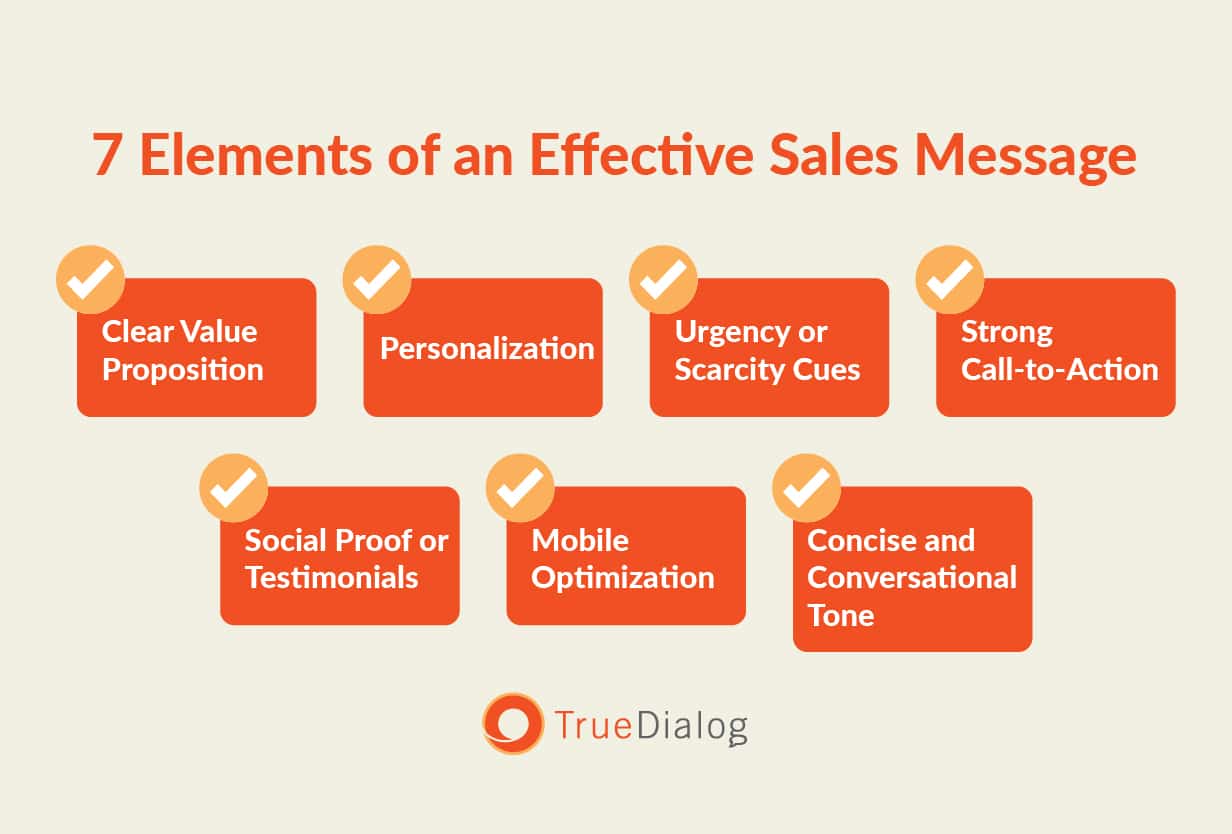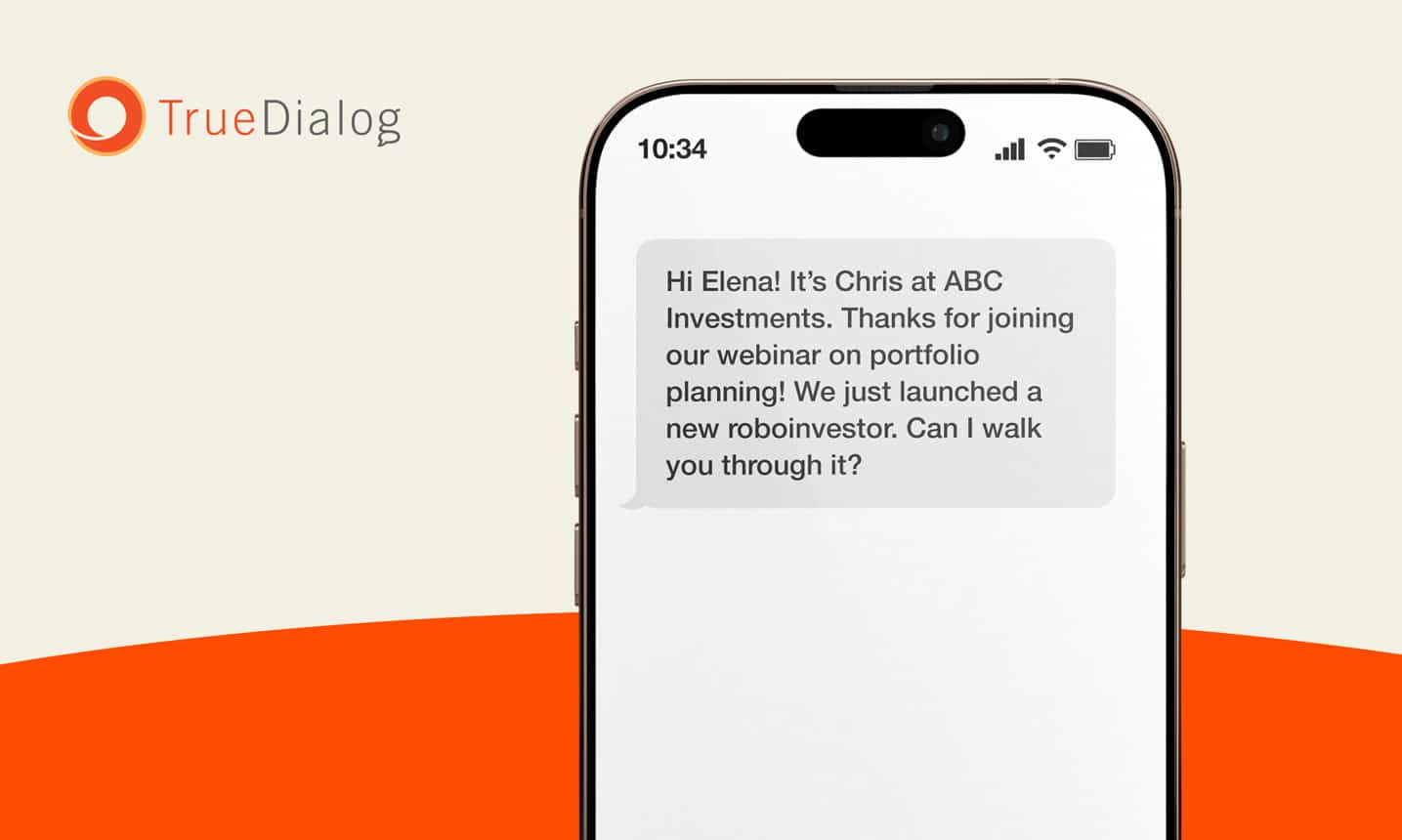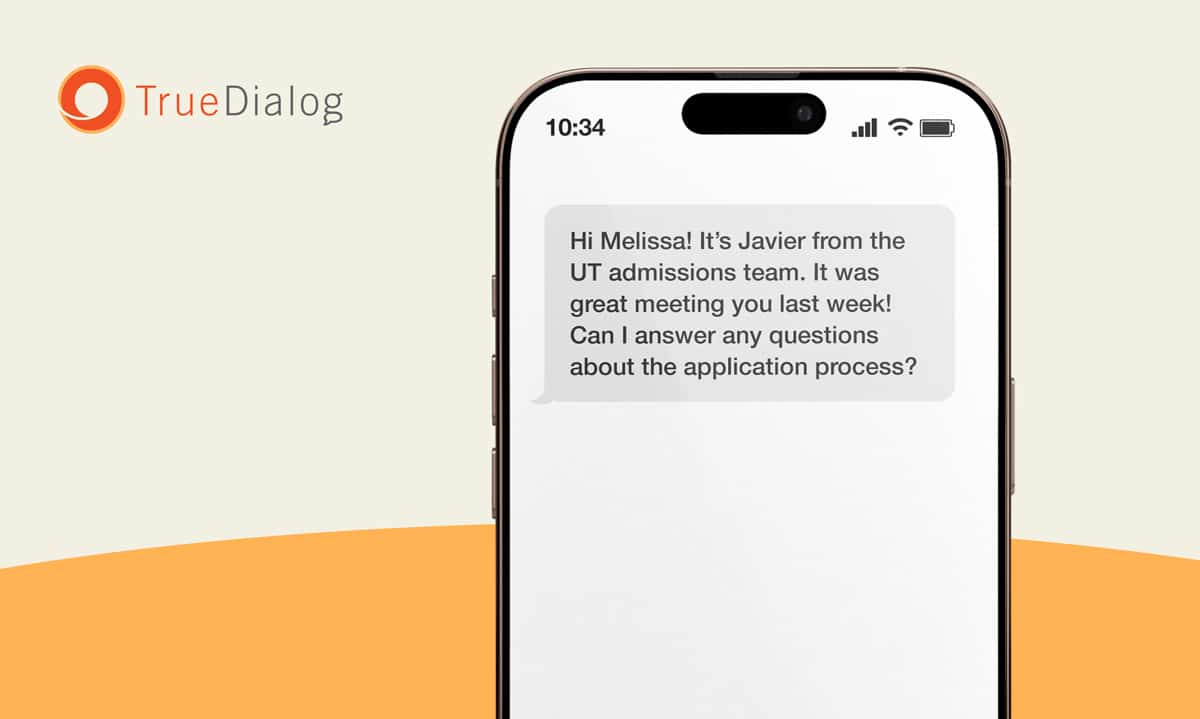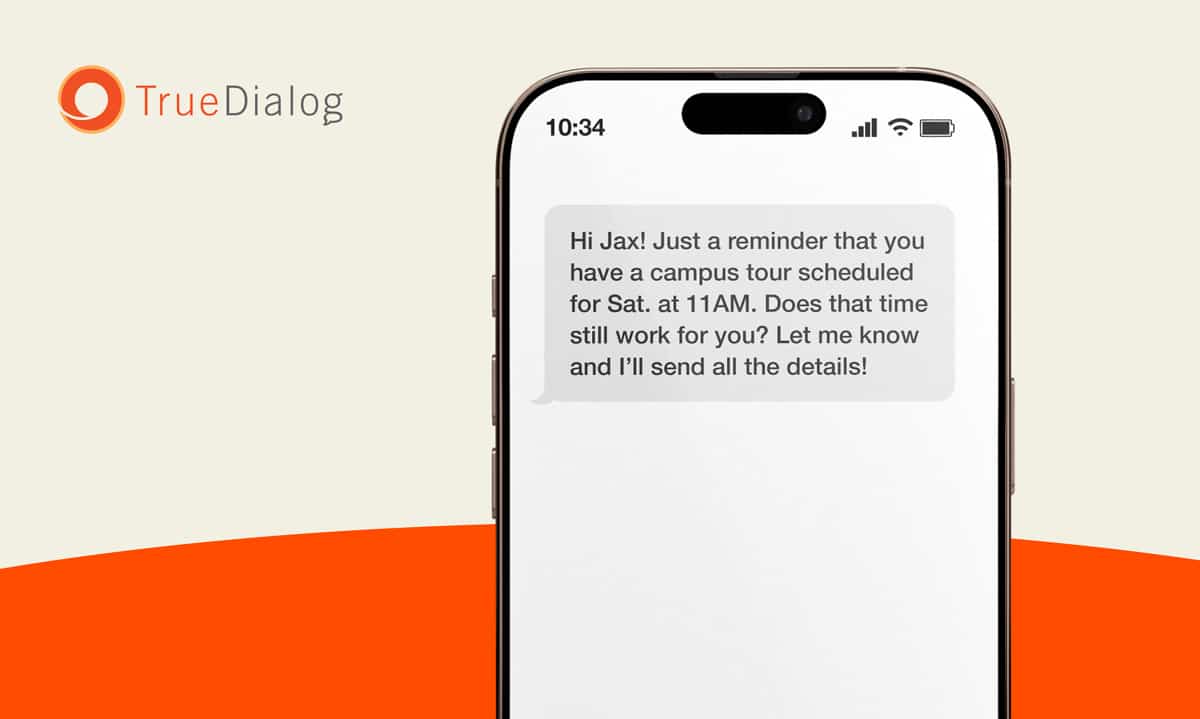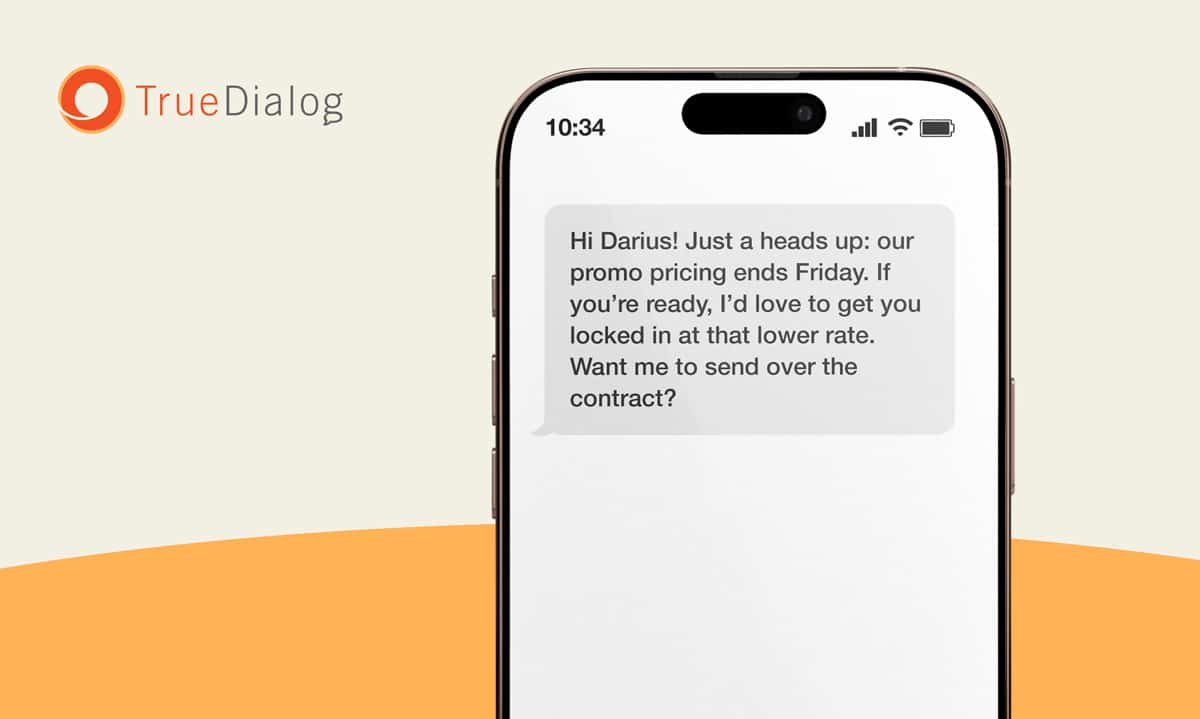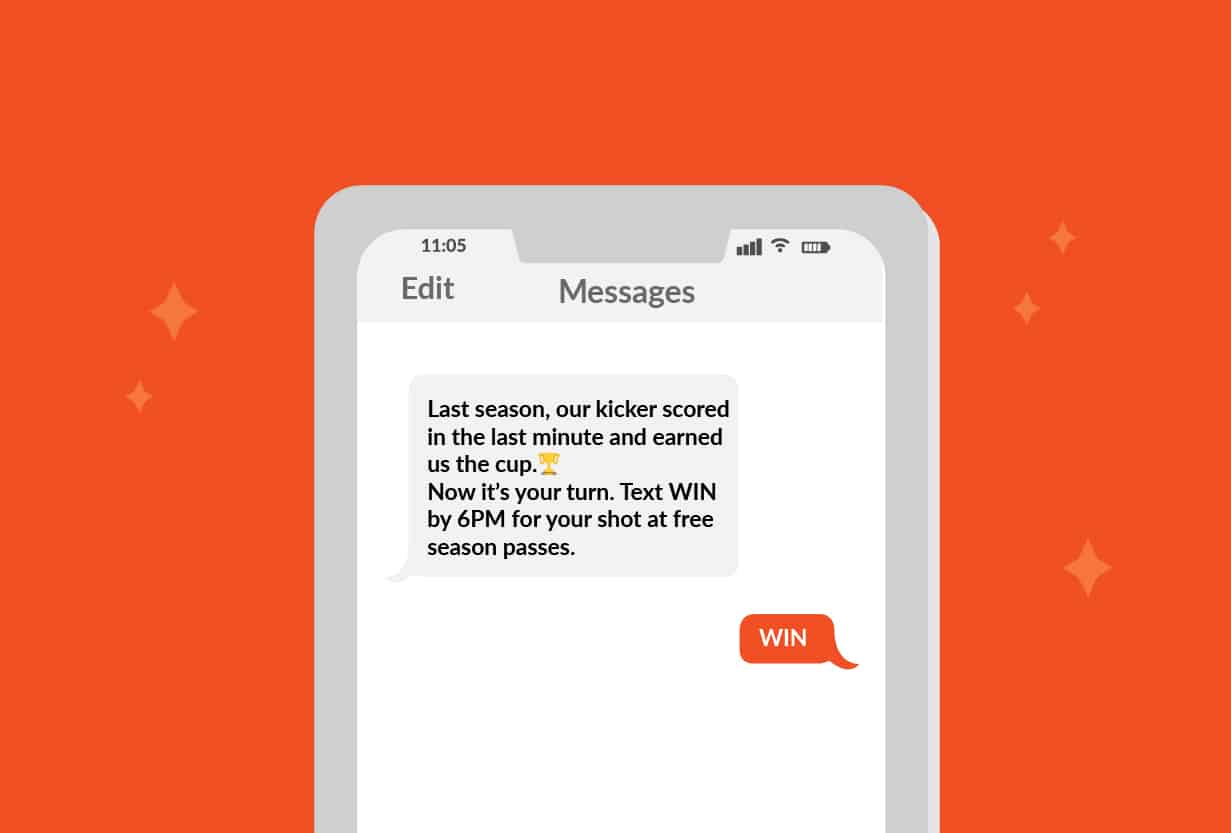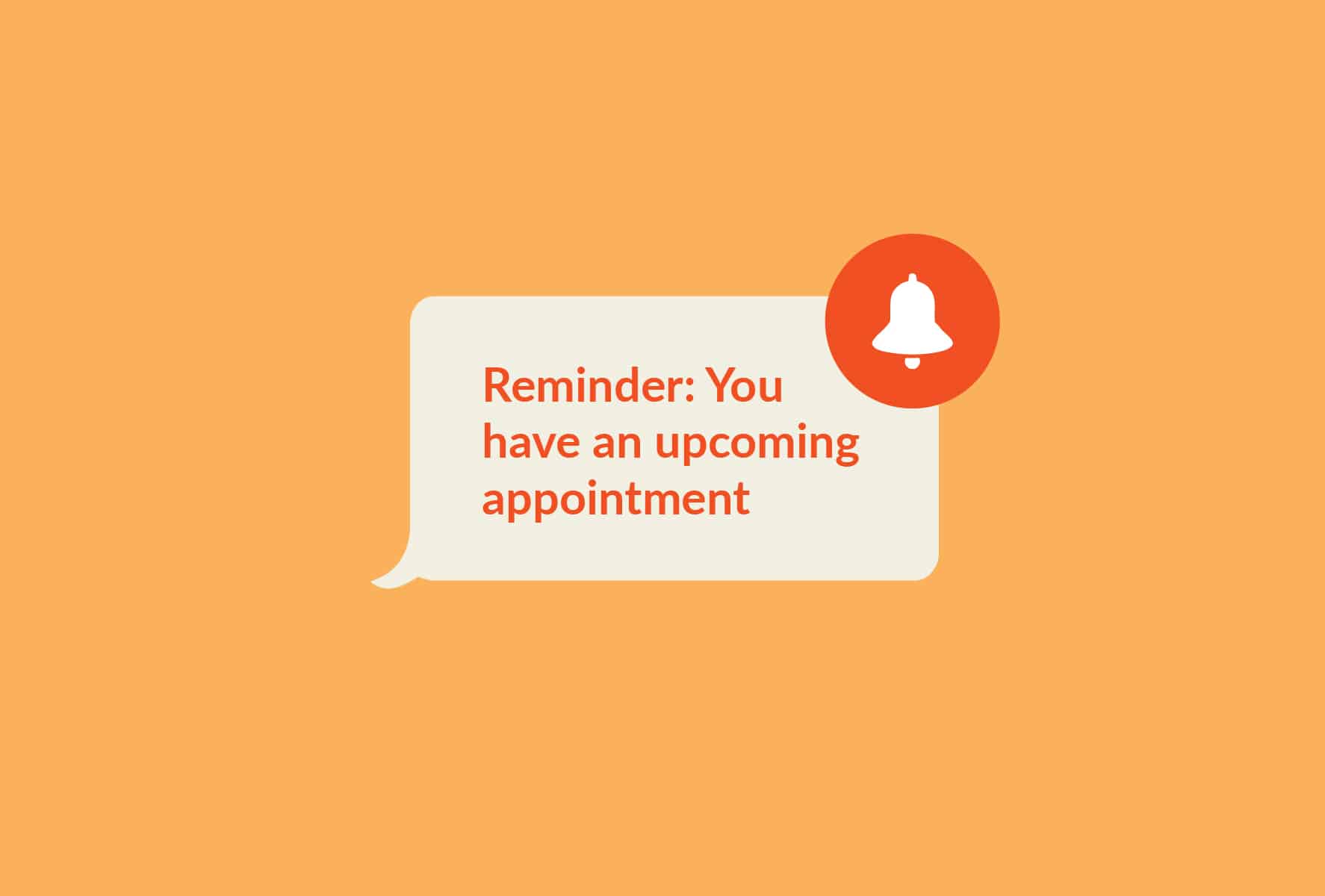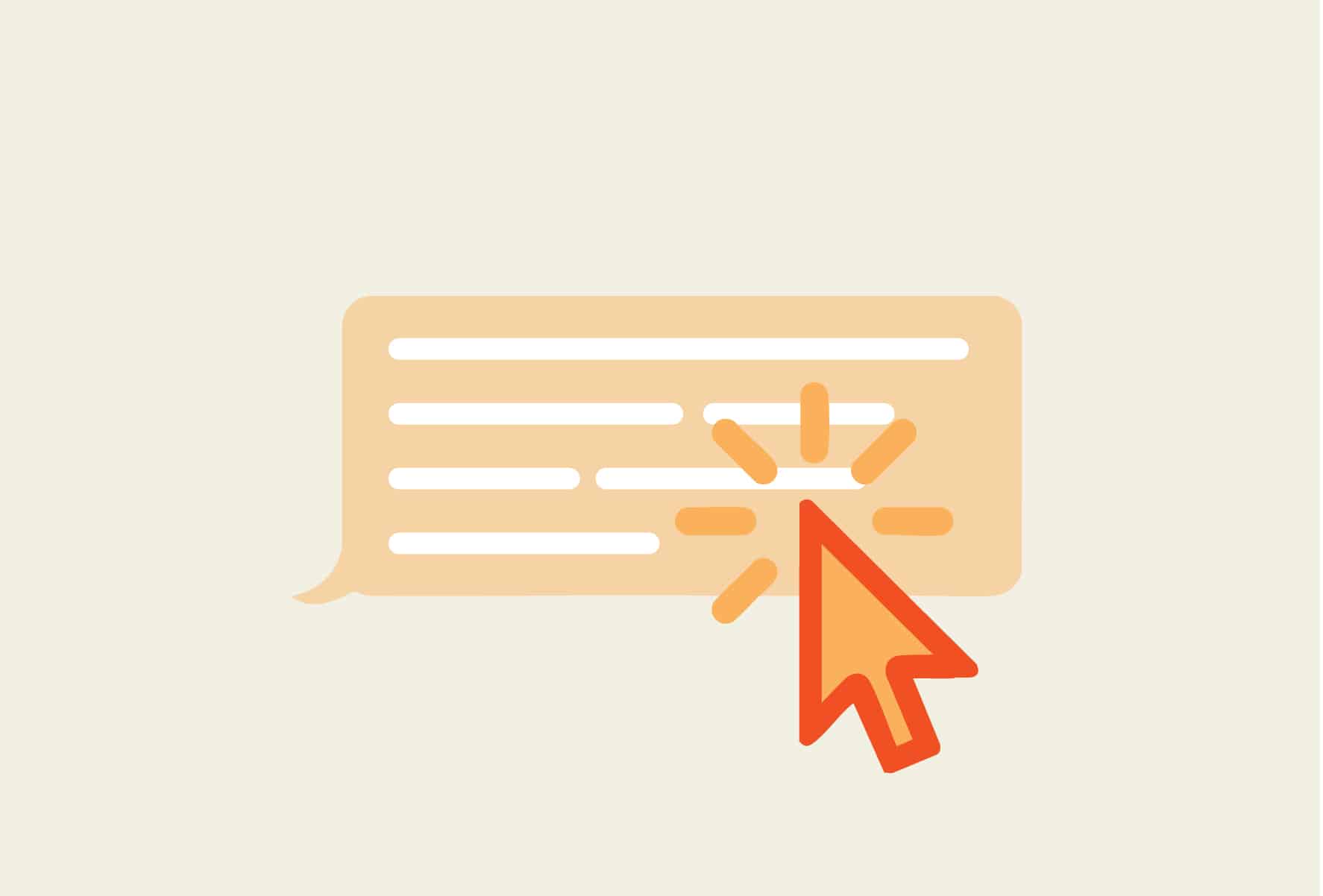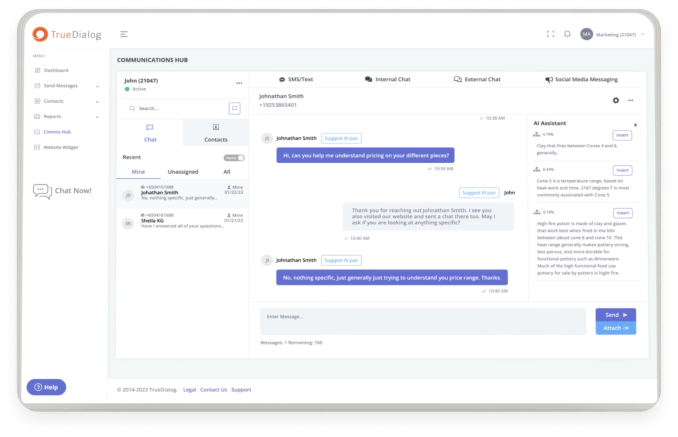Selling in a digital-first world means you have plenty of channels you can use to reach your prospects. Unfortunately, so do your competitors — and everyone else. As your prospects face perpetually overflowing email inboxes and ever-growing backlogs of unopened voicemails, it’s becoming harder to cut through the noise (let alone close a deal).
That’s precisely why so many organizations have turned to SMS. Not only do texts have an astronomically high open rate (98%), but a staggering 90% of business leads say they’d rather be contacted by text than phone call, according to Selling Power.
To help you get started, we’re sharing several effective sales messages examples for nearly every conceivable use case — plus tips and insights proven to yield results.
What Is a Sales Message?
Before we go any further, let’s start with a clear sales message definition to make sure we’re on the same page.
An SMS sales message is a short, personalized, and conversational text that a sales rep sends to help guide a prospect further along on the buyer’s journey. For example, a sales rep might leverage texting to build relationships in the early stages of a deal, address questions or objections during the mid-to-late stages, provide nudges to help accelerate the closing process, or stay in touch with customers beyond a sale and keep your organization top-of-mind.
Sales Messaging vs. Marketing Messaging: What’s the Difference?
When businesses launch an SMS program, they tend to focus more heavily on marketing messages. That’s because texting lends itself well to awareness-driven efforts like promotions, special offers, product launches, and event announcements, and has proven to be a reliable method for generating interest. But if you’re only using text messages for marketing efforts, you’re limiting their potential.
While marketing SMS is usually broader and meant to nurture contacts earlier in the customer journey, sales messaging is more targeted and personal. Usually, these conversations happen between a specific sales rep and an individual lead, and often begin in response to a previous interaction or after a prospect has shown clear intent.
Why Sales Messaging Matters for Conversion Rates
A smooth, communicative sales process isn’t only vital for closing deals — it also boosts customer confidence and loyalty, increases the likelihood of referrals and repeat business, and alleviates sales reps’ headaches. Given that people rarely go anywhere without their phone and frequently open and respond to messages within minutes of receiving them, SMS is a convenient and effective channel for achieving all of the above.
A well-written, well-timed text can reduce friction, build trust, shorten the sales cycle, and help you keep the lines of communication open. Even hearing that a prospect is indefinitely blocked by budget constraints or has ultimately opted for a different path is better than the radio silence many sales reps face when communicating exclusively via phone and email. At least then you have more accurate data about lost sales and can use these insights to refine your product offerings and marketing tactics.
7 Elements of an Effective Sales Message
Although SMS messages boast a much higher open rate than other digital channels, responses aren’t guaranteed. While some texts drive near-immediate engagement, others are perpetually ignored — and the difference often boils down to a message’s structure and intent.
For example, if a message is too vague, too pushy, or self-serving, it could make the recipient uncomfortable and leave them with a negative impression of your brand. Or, if you focus too much on product features instead of the value they provide, or jump ahead and try to close a deal too early in the cycle, you’ll likely miss the mark and drive your prospect toward a more tactful competitor.
The best sales messages are clear, concise, customer-centric, and use language that gets contacts excited about an offering (rather than making them feel pressured or stressed).
Here are seven fundamentals of ultra-powerful sales messages to help you create a message framework for crafting enticing, engaging, and effective sales messages and effortlessly move recipients through your sales cycle.
1. Clear Value Proposition
The first question you should ask yourself before you send a text is, “Why should they care?” Consider what’s in it for your prospect and put yourself in their shoes to help you identify what would motivate them to take the next step.
For example, a software sales rep might share how their product solves a specific pain point that their prospect is facing. Meanwhile, a ticket rep at a sports venue might highlight how their VIP package includes front-row parking or complementary refreshments. The more relevant the value, the more likely someone is to respond to your message.
2. Personalization
Texting is one of the few ways to engage directly with an individual prospect in a digital channel where they’re likely already extremely active. So, even if your team is messaging dozens or even hundreds of leads per day, it’s crucial you still make each 2-way messaging experience feel like a personal, one-on-one chat.
While generic messages look and feel like spam (and can quickly get you blocked), personalized messages feel like a genuine conversation. Simple touches — like including a recipient’s name, referencing previous interactions, or tailoring the message content to their role, industry, or interests — have a dramatic impact on engagement.
Of course, manually customizing each message can take more time than you may have available, but using an enterprise SMS platform like TrueDialog makes it easy to personalize texts at scale.
3. Urgency or Scarcity Cues
Marketing psychology tells us that people are more likely to act on something when they feel like they might miss out — which is why limited-time offers are so effective. While you don’t want to make a recipient feel uncomfortably pressured, using scarcity cues is a great way to inspire buyers who are highly interested but still on the fence. For example, a sales rep at a software company might notify prospects when special pricing is about to expire, so they can help them lock in a lower rate.
Just make sure you’re being honest. Creating a false sense of urgency can quickly erode a prospect’s trust.
4. Strong Call-to-Action (CTA)
Like you, your contacts have countless obligations vying for their time and attention, and if you don’t give them a clearly defined action to take, there’s a good chance they’ll get distracted by another item on their lengthy to-do list. So, make sure every message ends with a simple and compelling call-to-action. (I.e., asking prospects to book a demo, schedule an appointment, click a link, or answer a question.)
5. Social Proof or Testimonials
For many prospects, taking the final step to open an account, complete an application, or sign up for a service can feel risky. But one of the best ways to ease a prospect’s anxiety is by sharing success stories from other people in similar situations. Case studies and testimonials are excellent tools for reassuring your contacts and guiding them into the final stage. For example, a rep for a CPA firm might tell a prospective customer how they saved another small business owner thousands of dollars on their taxes.
6. Mobile Optimization
You should always consider your audience’s experience and make sure the message fits the medium. In the case of SMS, that means accounting for small screens (and limited attention spans) by keeping your messages simple, shortening URLs, and ensuring any content you link to is mobile-friendly.
Note: Many link shorteners can trigger spam filters. However, by using a mass texting service like TrueDialog that has a proprietary link shortener, you can include branded URLs that look more trustworthy and ensure better deliverability.
7. Concise and Conversational Tone
Texting is inherently more casual than other channels, so even when you’re sending professional messages, you should use a more natural and conversational tone. And with a limit of 160 characters, you have no choice but to keep your message brief. In other words, feel free to use contractions, skip the stiff corporate speak, and engage with your contacts just as you would if you were meeting face-to-face.
Sales Message Examples for Every Stage of the Sales Cycle
Now that we’ve covered why SMS is such an effective sales channel and outlined ingredients for a successful message, let’s delve into how you can use texts at every stage of the journey (plus effective sales messages examples to inspire your next conversation with a prospect).
Initial Outreach Sales Message Examples
Cold outreach gets a bad rap — and for a good reason: it’s often done poorly. Calling, emailing, or messaging someone out of the blue to drum up business without doing enough research or personalizing your approach is a recipe for a reputation-smearing failure.
Plus, cold texting is prohibited by the Telephone Consumer Protection Act (TCPA), Cellular Telecommunications Industry Association (CTIA) guidelines, and numerous other local and international mandates. So when you first engage people in the awareness stage, make sure you’re only reaching out to people who have explicitly indicated they are open to receiving text communications from your organization. (Using a platform like TrueDialog with robust SMS reporting and thorough activity records will help ensure you don’t inadvertently text someone who has opted out — or never opted in.)
When you execute them correctly (and comply with industry regulations), text outreach campaigns can be a wildly effective method for establishing rapport and showing prospects you’re committed to meeting their needs.
Examples:
Hi Elena! It’s Chris at ABC Investments. Thanks for joining our webinar on portfolio planning! We just launched a new roboinvestor. Can I walk you through it?
Hey Sam! It’s Yasmin at 123 Tech. Thanks for dropping by our booth at TechCon! Here’s that ebook I mentioned with AI predictions for 2026: [LINK]
Follow-Up Sales Message Examples
There’s a common-yet-frustrating scenario that almost every sales pro has experienced: You hit it off with a new lead, and they seem eager and excited to move forward. They tell you they’re ready to buy, you get ready to close the deal, and then… crickets.
Early in your career, you might’ve taken their sudden silence personally — but as a seasoned pro, you’ve learned that even extra-warm leads can get distracted, move on to other obligations, and lose their enthusiasm. Fortunately, a well-timed follow-up message may be all you need to regain your momentum.
Examples:
Hey Mateo! It’s Max at XYZ Arena. You’d asked about box seats for 2026, and we still have two blocks left! Want me to hold one while you confirm with your team?
Hi Melissa! It’s Javier from the UT admissions team. It was great meeting you last week! Can I answer any questions about the application process?
Appointment Reminder Examples
We’re all living busy lives with full calendars, and sometimes things fall through the cracks. But, as a sales pro, missed appointments can be frustrating and throw a wrench in your scheduling. Fortunately, SMS is an excellent channel for sending timely, hard-to-miss reminders about upcoming events. These little nudges can go a long way toward making sure prospects don’t forget about their appointments (or show up late).
Examples:
Hello Dan! It’s Sophia. Confirming I have you set up for a demo tomorrow at 2PM via Zoom. Looking forward to chatting. LMK if you need to reschedule!
Hi Jax! Just a reminder that you have a campus tour scheduled for Sat. at 11AM. Does that time still work for you? Let me know and I’ll send all the details!
Closing the Deal Examples
Keeping up the momentum at the tail-end of the sales cycle requires a careful approach. On one hand, you want to create urgency so your prospect will take the leap, but if you’re too pushy or overbearing in the eleventh hour, it could cost you the whole deal.
To keep your prospects moving ahead, make sure your messages are confident and respectful, underscore your willingness to help, and finish with a simple CTA.
Examples:
Hi Darius! Just a heads up: our promo pricing ends Friday. If you’re ready, I’d love to get you locked in at that lower rate. Want me to send over the contract?
Hey Liz! I just found out that another group is interested in the VIP seats you wanted. Are you still interested? Let me know, and I’ll get them reserved!
Re-Engagement or Win-Back Examples
Just because a lead goes cold doesn’t mean they’re a lost cause. Sometimes prospects simply bow out because their priorities have changed, or your initial offering didn’t meet their needs — but that doesn’t mean you can’t win them back. A text message is an easy, low–pressure option for re-opening conversations that have died out, and reigniting interest in your brand.
Examples:
Hi Omar — it’s Felicia at 123 Tech! I just learned we’re rolling out a new inventory tool that might be a better fit for your team. Want to take a peek?
Hi Lucy! I hope you’ve had a great summer! I know financial planning took a backseat this season, but I’m here whenever you’re ready to dive back in 😊
How to Scale Sales Messaging with SMS Tools
Of course, crafting thoughtful and engaging sales messages is only one part of developing a winning strategy (albeit a big one). To truly excel with SMS as a sales channel, you also need a reliable text marketing platform.
Here are three ways the right solution can ensure your success:
Enhanced Mass Texting Functionality
It can be overwhelming to keep up with several threads at once — unless you have access to the right bulk text features. For example, TrueDialog integrates with leading CRMs and marketing automation tools like Salesforce, HubSpot, and Eloqua, helping streamline your workflows. By making conversations accessible to your team, other reps can jump in when you’re unavailable — or you can launch automated campaigns that send messages based on specific triggers and schedule messages to send at just the right time.
Personalized 2-Way Messaging
Even if your team is managing hundreds of relationships, you want to make sure every contact feels valued and special — and the best SMS platforms achieve this goal by helping you customize messages at scale. TrueDialog includes a library of AI-generated responses customized to your business, templates with dynamic fields for easy personalization, and an auto-response inbox attendant so every prospect receives timely responses and a personal touch.
Actionable Reporting
As a sales professional, you know data is everything. With access to delivery rates, link click tracking, and other real-time engagement insights, TrueDialog’s analytics and reporting dashboard helps teams make more informed decisions and further optimize future messages. You can drill down further with filters, visualize data with graphs, and review messaging history to learn from previous sends and continually boost your outcomes.
Build Stronger Sales Messaging with TrueDialog
With its historically high open rates and fast responses, SMS is one of the best ways modern sales teams can connect with their prospects, and has the potential to vastly improve the sales experience for everyone involved. By implementing the seven elements of effective messages and using the sales message examples above to inspire your own tactful, well-timed communications — plus choosing the right SMS solution to power your efforts — you can cultivate stronger relationships at every stage of the buyer’s journey.

